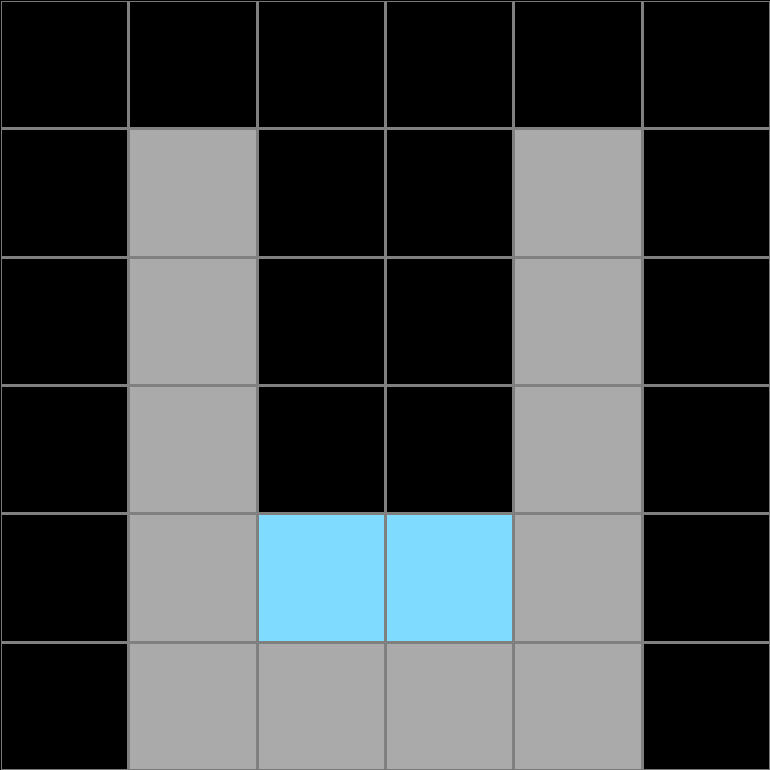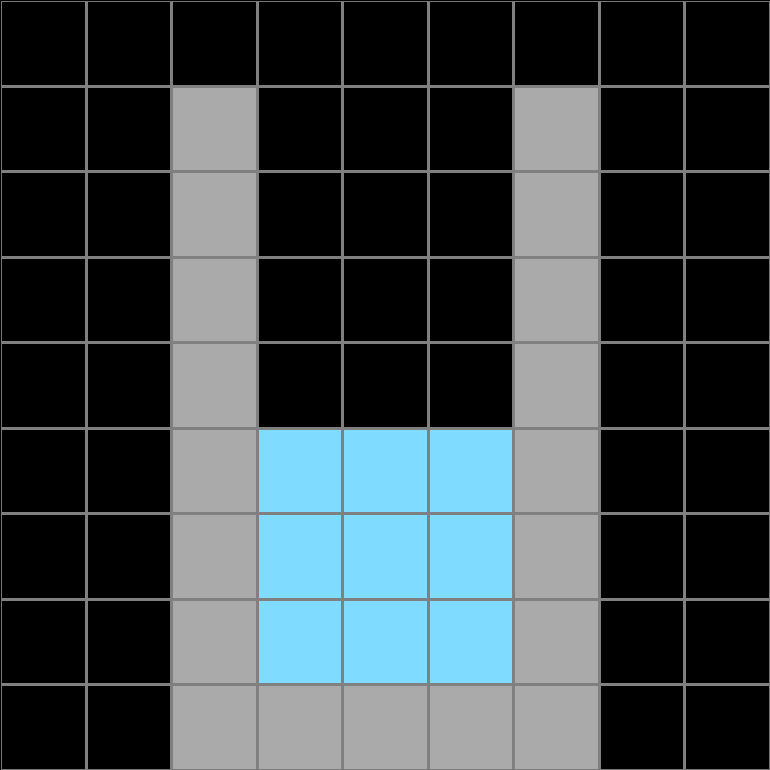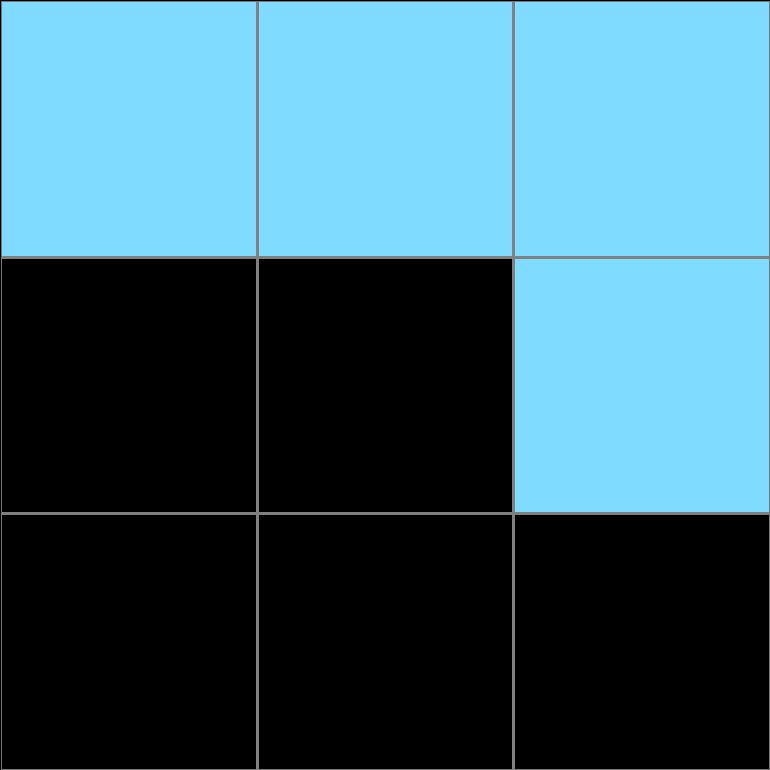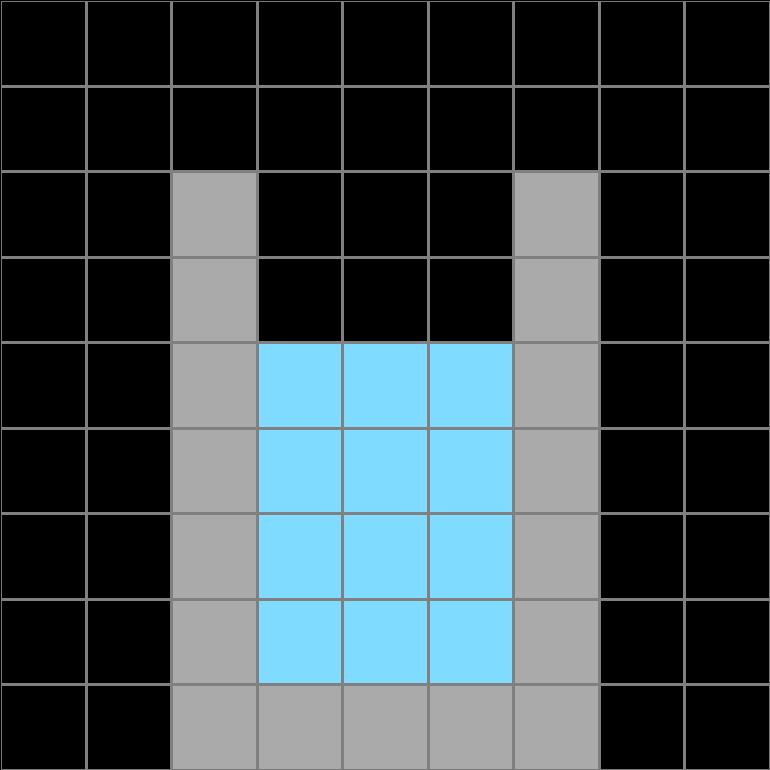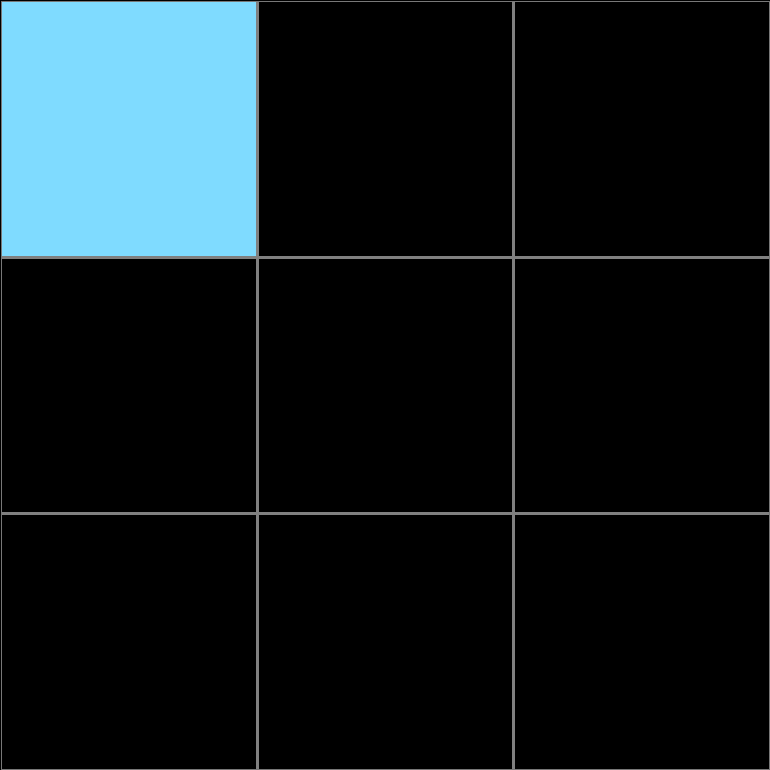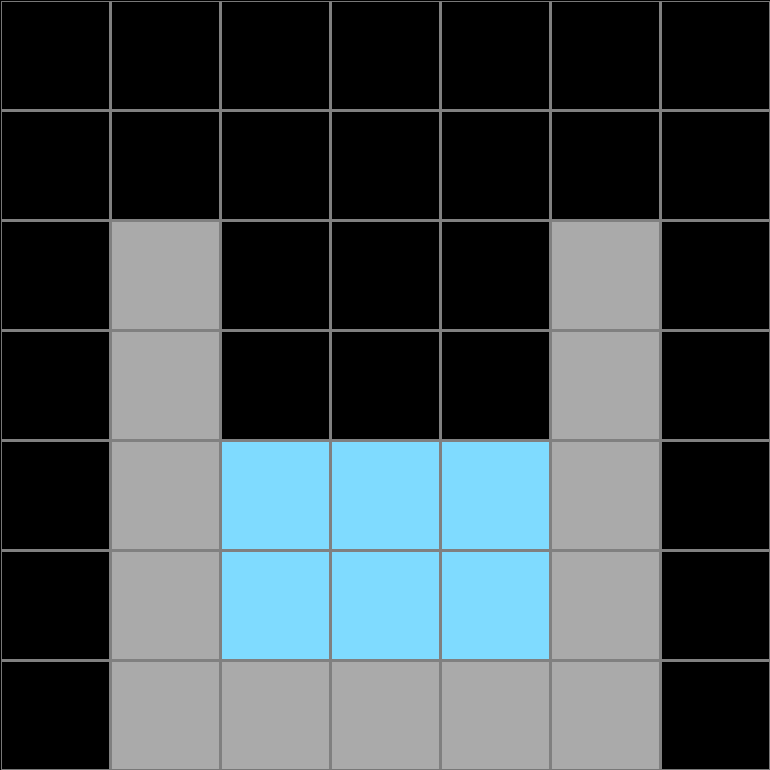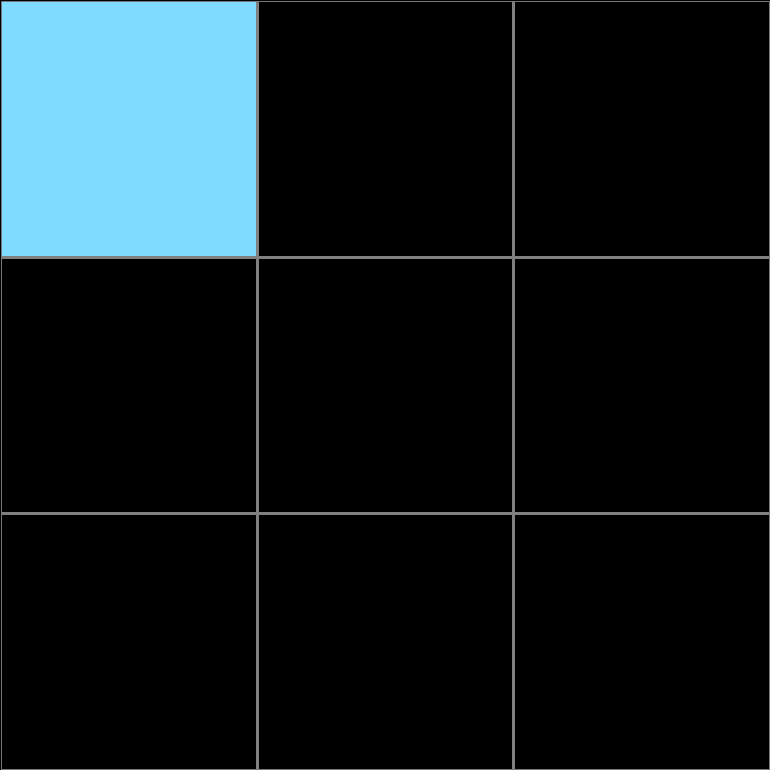Participant 1
Initial description: Count the number of black squares on the left side in the middle of the gray bars in the input. Then beginning at the upper left corner of the output add a light blue square for however many black squares you counted.
Final description: Count the number of black squares on the left side in the middle of the gray bars in the input. Then beginning at the upper left corner of the output add a light blue square for however many black squares you counted.
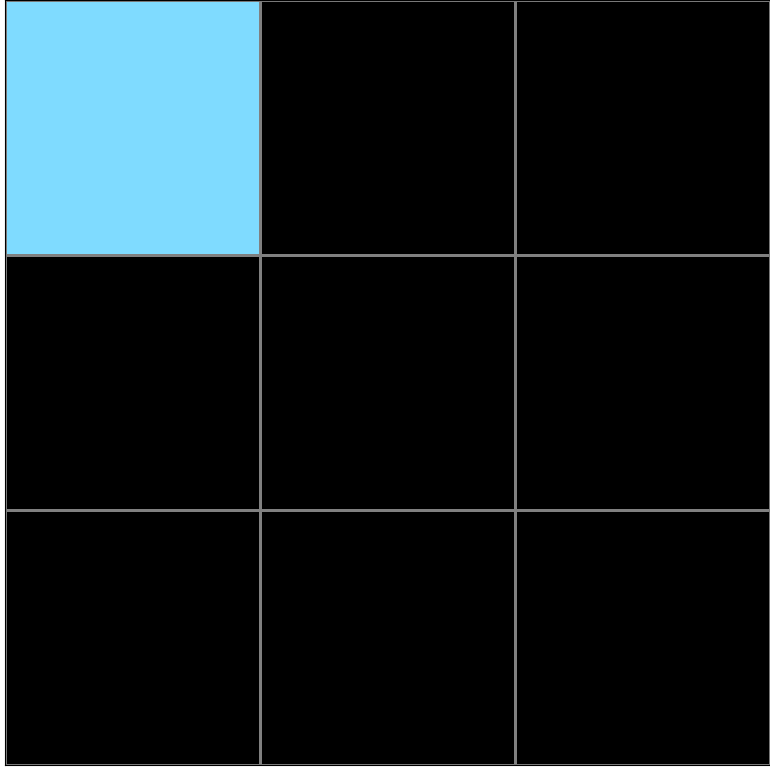
Participant 2
Initial description: It seems that grid correlates with the amount of blue that fills in the U shape on the input. Since it's nearly filled I added more blue.
Final description: I had a hard time determining, but I believed it had to do with the ratio of gray to black tiles in the input.

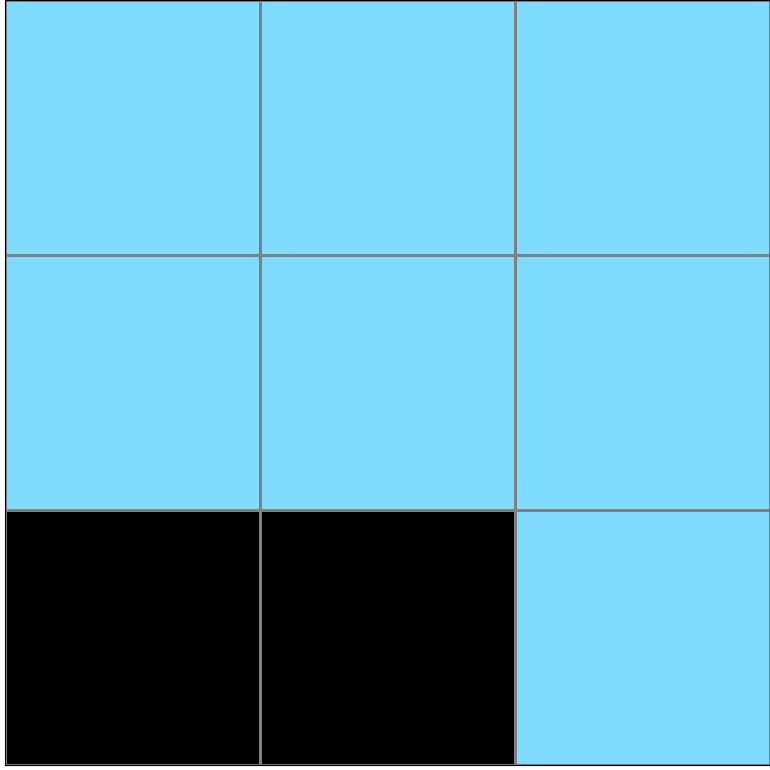
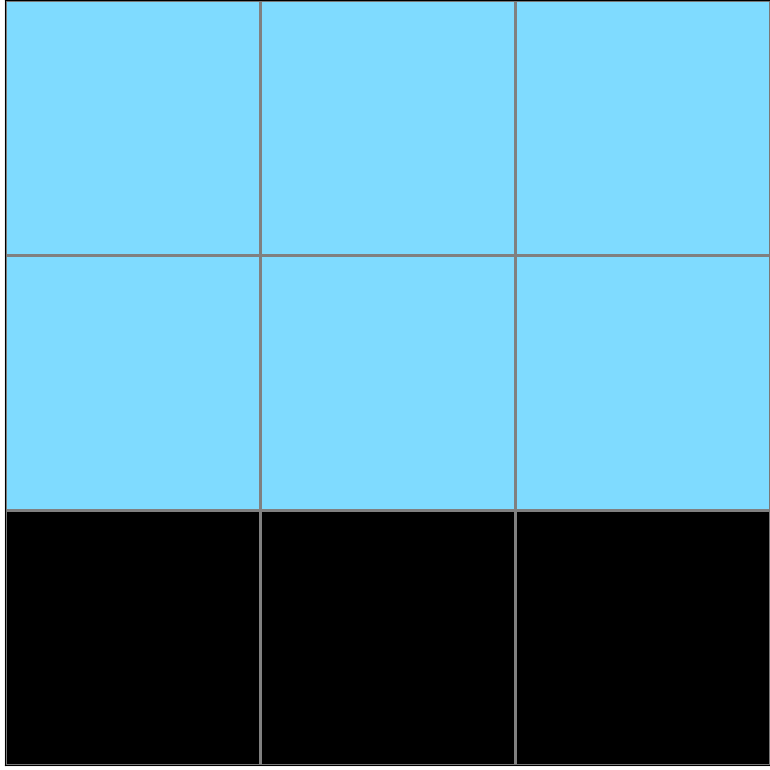
Participant 3
Initial description: If the blue squares in the test input are stacked horizontally more then vertically the test output will be three blue on the top of a 3x3 grid. If the blue squares in the test input are not stacked horizontally more than vertically then the output will be a 3x3 grid with blue squares in the top row and right of center space.
Final description: Look at how many rows between the grey squares are black spaces. For each of the black rows the test output gets a light blue space. Make the test output a 3x3 grid and fill in the correct number of light blue spaces starting at the top left space, then right until the end of the row and then down to the leftmost space on the next row if necessary.


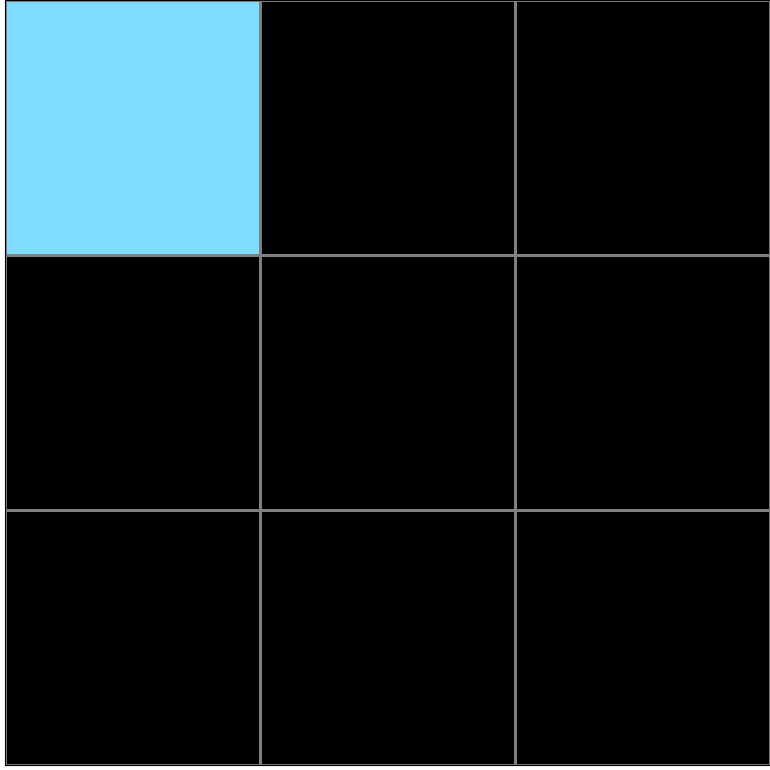
Participant 4
Initial description: I honestly really have no idea what the rule could me. I'm just guessing because I don't see the pattern at all currently.
Final description: I honestly really have no idea what the rule could me. I'm just guessing because I don't see the pattern at all currently.
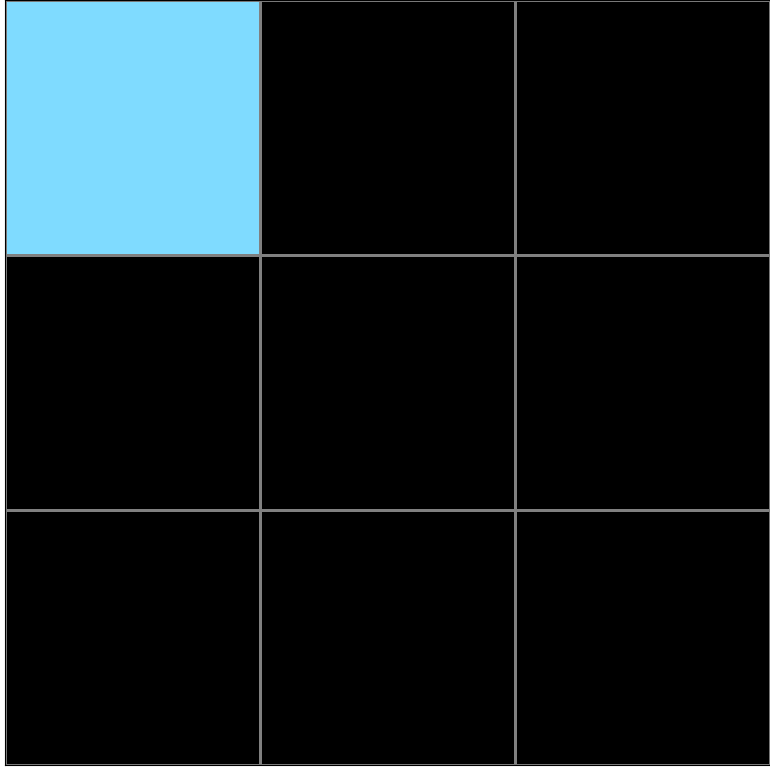
Participant 5
Initial description: Count the number of black horizontal lines inside the gray U-shaped object on the input. Use that number to fill in the output on a 3x3 grid. Starting at the top of left of the 3x3 grid fill in a blue dot for the number of black lines.
Final description: Count the number of black horizontal lines inside the gray U-shaped object on the input. Use that number to fill in the output on a 3x3 grid. Starting at the top of left of the 3x3 grid fill in a blue dot for the number of black lines.
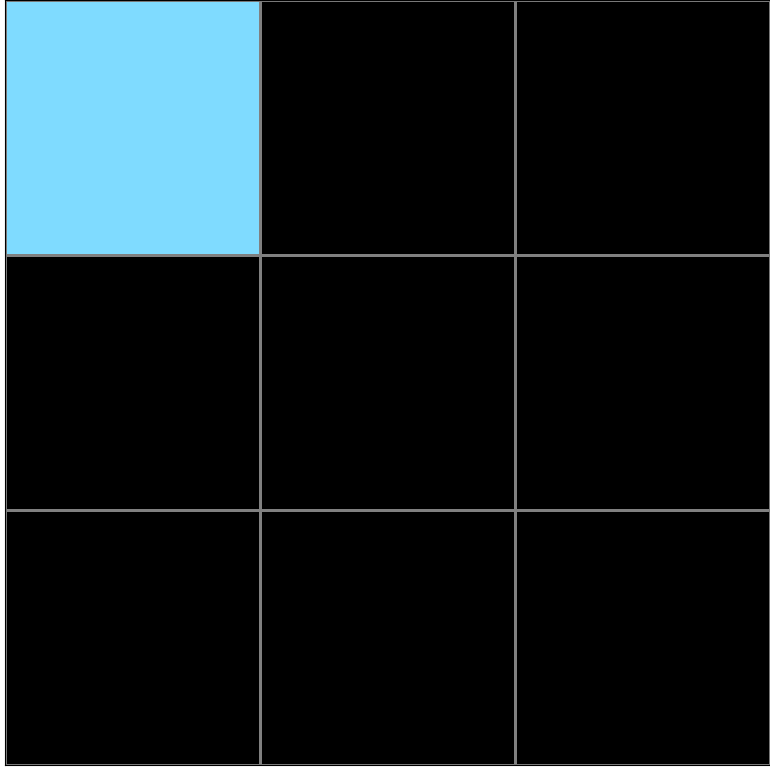
Participant 6
Initial description: The rule was a little tricky - you have to count how many black boxes from the top of the blue to the top of the container (assuming that the gray is like a container) then select that number of blue boxes starting in the upper left.
Final description: The rule was a little tricky - you have to count how many black boxes from the top of the blue to the top of the container (assuming that the gray is like a container) then select that number of blue boxes starting in the upper left.

Participant 7
Initial description: only one row in test with no blue, so only one blue in output
Final description: only one row in test with no blue, so only one blue in output
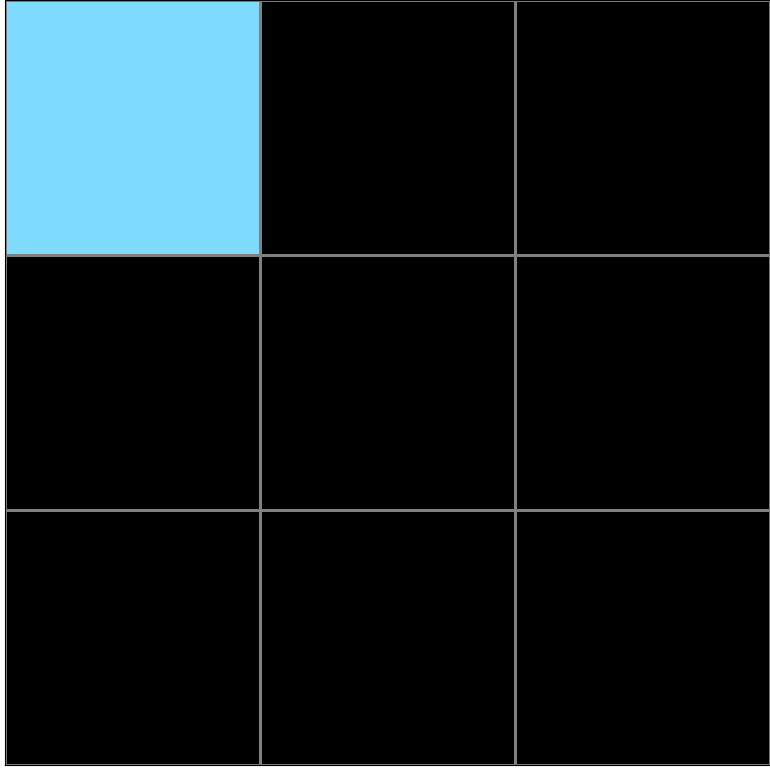
Participant 8
Initial description: no clue
Final description: could not figure this one out
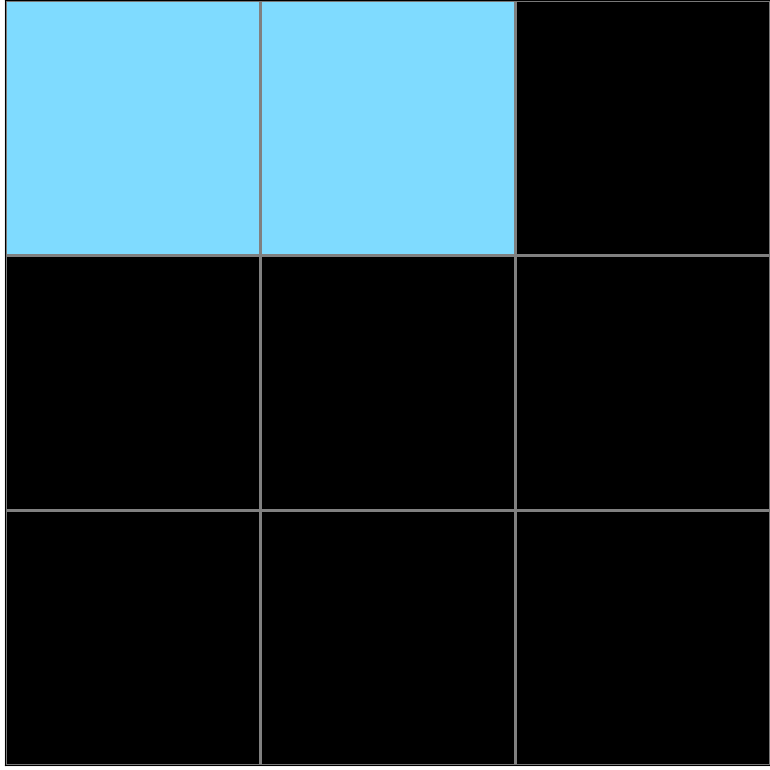
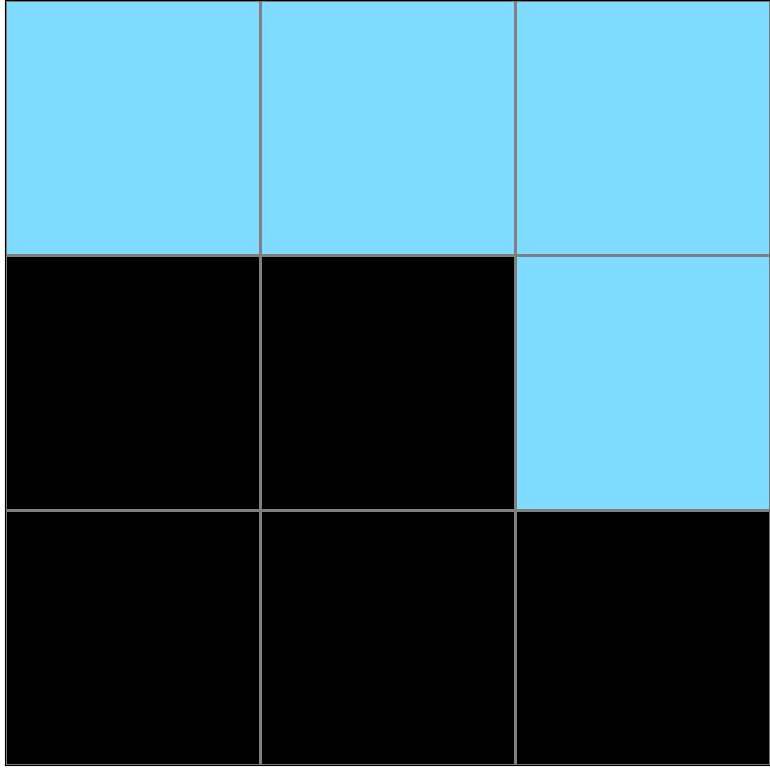

Participant 9
Initial description: its like input
Final description: i cant understand

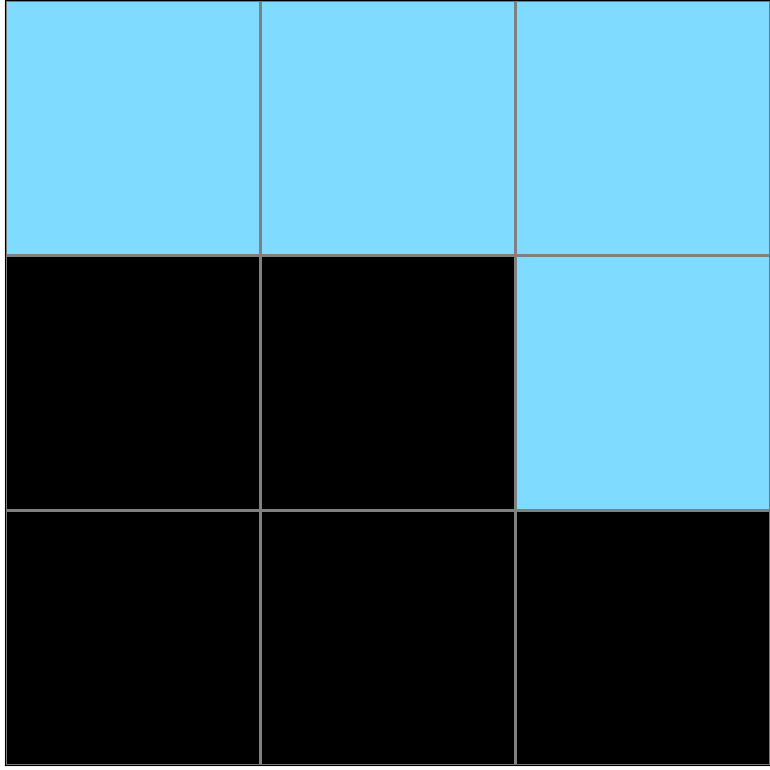
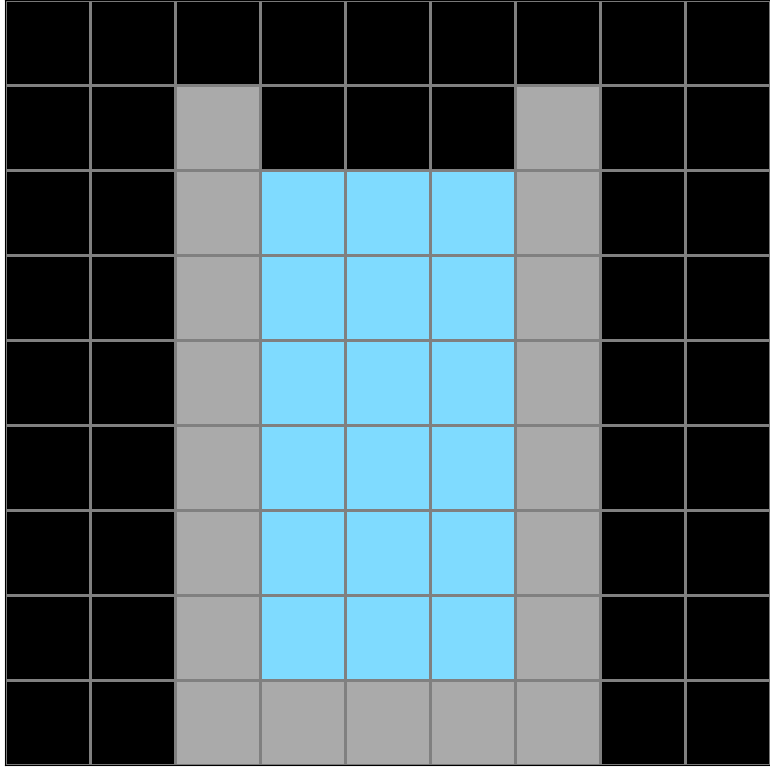
Participant 10
Initial description: how tall the gray container is compared to the blue water, if it is one block then it transformed into one Blue Block on the left side
Final description: how tall the gray container is compared to the blue water, if it is one block then it transformed into one Blue Block on the left side
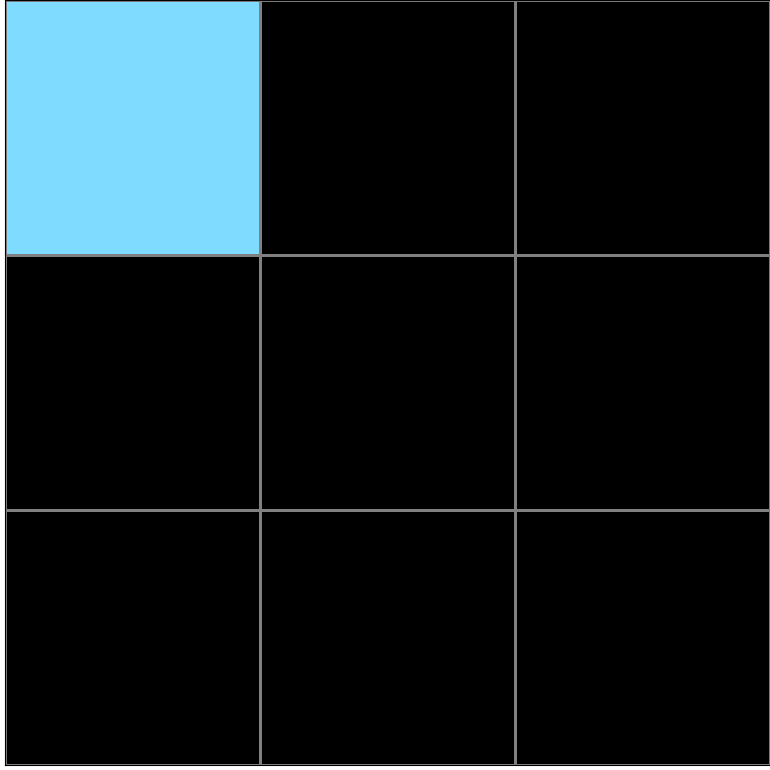
Participant 11
Initial description: Based on the examples, the amount of blue squares corresponds to the level of black squares between the blue and the top of the grey "vessel". These extend out from the top left of the output grid.
Final description: Based on the examples, the amount of blue squares corresponds to the level of black squares between the blue and the top of the grey "vessel". These extend out from the top left of the output grid.

